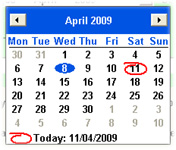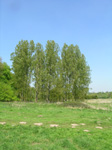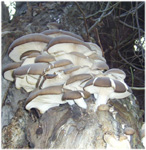This section displays our local records, it is divided into several sections:
Monthly List shows all the species we have found in the Watford area tabulated to display monthly records from our own reference collections. A more general idea of the seasonal occurence of each species is given on the species pages.
Locality lists show records from our most frequently worked recording sites plus a short site description and photographs of the site.
SSQI lists Here we list saproxylic species from two of our more wooded sites giving the Saproxylic species quality index for each site. The SSQI ¹ 'is a scoring system designed to assist with the evaluation of the conservation significance of wooded habitats in Great Britain for saproxylic ² Coleoptera. The index is calculated against a standard list of 598 saproxylic species for which rarity scores, based on their known distribution, have been assigned. The sum of these rarity scores for a list gves the Species Quality Score (SQS) and the Index (SQI) is derived by dividing the SQS by the number of contributing species.' To reduce the impact of rare species in a small sample a threshold of 40 species is required. Both our sites have reached that threshold (just) but this is without using any of the more intensive recording techniques. This is something we intend to rectify in the near future.
It will be realised that nationally there wil be a weighting towards the south because this region supports (ostensibly) the greatest species diversity, and this is supported from a glance through the top 50 sites on the list ¹. This may, of course, reflect the more intensive recording activity in the south but in any case we are well placed geographically to add some meaningful contribution to the native list.
We do of course realise that there are many records of beetles from our Watford area going back over the years e.g. see the NBN website, and for those with an historical interest in our fauna or in how our fauna has changed these will very useful, but here we have made an effort to ignore this aspect of recording and to avoid quoting historical records other than those of which we have had experience. This we have done for the following reasons.
These records can be found throughout the literature and those with a genuine interest in this aspect will naturally begin to search for these, this is a very rewarding and somewhat addictive way to carry on and, with our limited free time and with all the other activities involved in recording our local fauna, we think our efforts are better spent on other work. Our interest lies in the Watford coleoptera fauna as we experience it and in conveying some of our findings through our website; here we can show voucher material, describe this in some detail and relate some of our experience of the various species. We think it useful also to give some idea of the national occurrence of our species so that they might be considered in context.
Anybody who has studied their local fauna over the last few decades will very probably have noticed a few changes in species and in abundances and that not all, if any, of these changes have been what might be considered good. Some of us will have noticed that many species have become less common (although if challenged to be quantitative about this we would generally be at a loss!) in recent years and that some species have suffered greatly. This is a great shame and the more intelligent and thoughtful among us cannot help but be upset by this, but on the other hand there is a good deal of interest in biodiversity, conservation and global warming etc. and there is much effort being made on the behalf of many of our species. All of this means that it is an exciting time to be interested in coleoptera and for these reasons we prefer to look forward towards what we might find rather than back at what we might have lost.
¹ Fowles, A.P., Alexander, K.N.A. and Key, R.S. 1999. The Saproxylic Quality Index: evaluating wooded habitats for the conservation of dead-wood Coleoptera. The Coleopterist, 8:121-141.
² 'dependent upon microhabitats associated largely with the processes of damage and decay in the bark and wood of trees and larger woody shrubs and climbers. This includes sap runs, fungal hyphae or fruiting bodies, rot holes etc.' Fowles et al. ¹

Monthly

Cassio Bridge
Cassiobury Park
Common Moor
Oxhey Park
Radlett Road
Sarratt Bottom
Town Centre
Town Centre Garden
Whippendell Wood

Cassiobury Park
Whippendell Wood